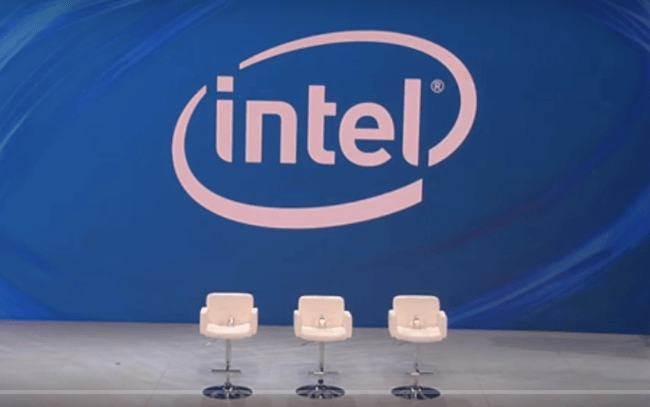
Tech giant Intel has staked out a leadership position on climate change. However, just last week the company reaffirmed its commitment to membership in two notoriously anti-climate lobbying groups, the U.S. Chamber of Commerce and the National Association of Manufacturers.
A number of other high-stakes corporate citizens have been motivated to jump ship from one or both organizations in recent years, for a variety of reasons. The list includes Apple, Facebook, Duke Energy, Dow Chemical and CVS Health.
So, what's holding Intel back?
Intel supports Obama administration on climate change
Intel's membership affirmation appeared in a June 2 article by Greenpeace's Energydesk. The company responded to a series of questions from Energydesk about its membership in lobbying groups that have aggressively opposed the Obama administration's climate change initiatives.
In its response, Intel begins by clearly stating that it supports climate action, and that it can be a powerful driver for the transition to a low-carbon economy:
"Intel takes the view that the most important action we can take to address the critical issue of climate change is to reduce our own direct carbon footprint and to innovate products that help others reduce their footprints by improving their own energy efficiency," the company said in a statement to Energydesk.
Intel also asserted its support for the Obama administration’s Climate Action Plan as well as the Environmental Protection Agency's Clean Power Plan. That's not an empty claim. The company noted that it undertakes climate change activities through several influential organizations including the Semiconductor Industry Association, the Advanced Energy Economy, the Center for Climate and Energy Solutions, and the American Council for and Energy Efficient Economy.
Be that as it may, Intel appears to have no intention of quitting either the Chamber of Commerce or NAM:
"The U.S .Chamber of Commerce and the National Association of Manufacturers (NAM) are the only associations we belong to that, to our knowledge, typically take a negative position on federal climate legislation and Intel does not participate in their efforts."
That seems like a mighty fine line to walk, but it is almost identical to the climate change position that Microsoft staked out several years ago on its sustainability blog:
"The U.S. Chamber of Commerce has never spoken for nor done work on behalf of Microsoft regarding climate change legislation, and we have not participated in the Chamber's climate initiatives. Microsoft has stated that climate change is a serious issue that demands immediate, worldwide attention and we are acting accordingly."
A number of other high-profile Chamber of Commerce members would probably give similar answers, if asked. FedEx, for example, partners with the Obama administration on alternative fuel initiatives, and its sustainability goals include fuel-efficiency initiatives that dovetail with the administration's efforts, even as it maintains a high-profile role with the Chamber.
Walking the CSR walk
This is not intended to excuse Intel from pressure to drop its membership in anti-climate lobbying organizations. But in the context of the company's low-carbon initiatives, Energydesk's outrage seems a little misplaced.
According to its 2015 corporate social responsibility (CSR) report, last year was the eighth in a row that Intel met all of its U.S. electricity needs with clean power, which also made it the "largest voluntary corporate purchaser of green power" in the U.S. for the eighth year in a row. That feat was accomplished primarily through the purchase of renewable energy credits.
Last year, Intel also joined the White House’s American Business Act on Climate Pledge shortly before the historic COP21 Paris climate talks, as part of an aggressive push by U.S. corporate citizens to support a strong outcome for the Obama administration.
Intel's Climate Pledge includes continuation of its 100 percent renewable energy use and the installation of more clean power at its facilities. To emphasize the commitment in a high-profile setting, the company installed an eye-catching array of 60 micro-mini wind turbines on the roof of its global HQ in Santa Clara, California.
LEED construction is another area highlighted in the 2015 report. Intel notes that it now has 45 LEED buildings globally, totaling roughly 14.5 million square feet. The group includes a new Platinum certified building in Israel, the company's first project to achieve that designation.
Those are just the climate change highlights. Intel has also pushed forward on other CSR fronts, including a successful transition out of several conflict minerals in its supply chain.
Just last week, the company renewed its efforts to promote the anti-bullying initiative Hack Harassment, in partnership with Vox Media, Recode and the Born This Way Foundation. The announcement took place at Recode's annual Code Conference in Rancho Palos Verdes, California.
The hand that rocks the cradle...
In its article on the tech giant, Energydesk also pointed out that an Intel executive sits on the NAM board of directors, the implication being that there is more to the relationship than simply paying annual dues.
That's not necessarily a bad thing. Energydesk does not name the board member, but that position is held by Peter Cleveland, Intel's vice president for global marketing and communications and director of global public policy.
We're wondering why Energydesk chose to omit Mr. Cleveland by name, though the article does provide a link to the NAM directory where Mr. Cleveland's position on the board appears. A quick search for Mr. Cleveland's bio at Intel yields this information:
"Cleveland joined Intel in 2008 from the office of California Sen. Dianne Feinstein, where he served as chief of staff."
Those of you who follow climate change legislation will recognize Sen. Feinstein as a longtime climate advocate. With that background in his pocket, it seems likely that Cleveland would leverage his position on the Board to support the company's climate initiatives, not to undercut them. That's just a wild guess, but it is supported by Cleveland's job description at Intel:
"Peter Cleveland ... oversees a team of attorneys and policy professionals responsible for establishing favorable laws, regulations and policies to enable Intel’s global business success."Cleveland acts as the company’s public policy liaison to foreign governments and regulatory bodies as well as the U.S. Congress and Obama Administration in Washington, D.C. He represents Intel on the boards of various trade associations and related organizations ..."
As for that cradle thing, Intel's involvement with the Chamber of Commerce also goes beyond simple dues-paying. The company is involved with the Chamber of Commerce Foundation and its Corporate Citizen Center (CCC), which is active in the area of women's empowerment.
For example, in March 2015, CCC joined with the United Nations Office of Partnerships and U.N. Women, in a collaboration titled The Empowerment Bridge: Building a Lifetime of Opportunity for Women and Girls.
The event included a presentation by Suzanne Fallender, director of Intel's Global Women and Girls Initiative.
All this is to say that it's not particularly easy, or necessarily beneficial, for a climate-aware corporation to cut ties with trade associations that try to monkey-wrench climate action.
In that context, consider that primary season is coming to a close with Hillary Clinton as the presumptive Democratic nominee for president. If she wins the Oval Office this fall, her strong support for climate action could strengthen Intel's critique of the "negative position" taken by the Chamber of Commerce and NAM.
However, it doesn't particularly mean that Intel would cut ties with either organization.
In the case of NAM, it's not evident that the silencing of Intel's voice on the board of directors would motivate the organization to change its policy on climate change.
For the Chamber of Commerce, Clinton's career-long advocacy for women and girls could provide Intel with an incentive to make an even stronger bond with the Chamber of Commerce Foundation, and motive both Intel and the CCC to ramp up their gender equality collaboration.
Like we said, it's not as simple as it looks.
Image (video screenshot): via Intel Newsroom.

Tina writes frequently for TriplePundit and other websites, with a focus on military, government and corporate sustainability, clean tech research and emerging energy technologies. She is a former Deputy Director of Public Affairs of the New York City Department of Environmental Protection, and author of books and articles on recycling and other conservation themes.














